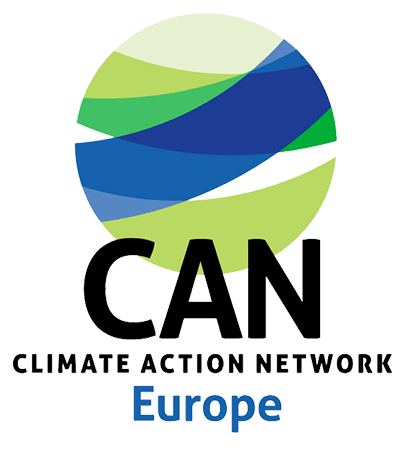Turkey
Turkey’s strategic geographical positioning offers significant potential for generating electricity from renewable sources. Currently, 40 per cent of its electricity is derived from renewable sources with wind and solar contributing to approximately 14 per cent of its total. While there has been an uptick in the installation of solar and wind energy infrastructure, Turkey still holds good potential for further expanding its use of these energy sources, thus reducing its reliance on fossil fuels.
Despite Turkey’s possibility to shift its energy production to renewable sources, the prevailing energy policy landscape largely leans toward favouring fossil fuels, particularly coal. Coal currently accounts for approximately 30 per cent of electricity generation, and there is a substantial 5 GW coal project pipeline undergoing the permit and licence procedures. Besides, Turkey stands as one of the few countries in Europe lacking a comprehensive coal exit strategy or a “no new coal” policy.
Turkey can achieve 35 per cent emission reduction by 2030
As outlined in the CAN Europe report “First Step in the Pathway to a Carbon Neutral Turkey: Coal Phase out 2030” , the implementation of a carbon pricing mechanism coupled with the savings deriving from the elimination of coal subsidies, would generate the necessary funds to facilitate an equitable and just transition for Turkey’s coal sector, during the current decade.
Energy policies hold a central role in Turkey’s climate politics, given that 70 per cent of the emissions stem from the energy sector. In October 2021, Turkey made a significant commitment, declaring its intention to achieve a net-zero economy by 2053. To reach this target, Turkey must undergo a substantial overhaul of its energy sector.
Climate Civil Society Organisations (CSOs) are urging the Turkish government to commit to a reduction or at least 35 per cent in emissions by 2030, as compared to 2020 levels. This reduction is fundamental for Turkey to achieve its net-zero target by 2053. This translates to the necessity for Turkey to reduce its emissions from 523.9 million tons of carbon dioxide equivalent (MtCO2e) in 2020 to 340 MtCO2e until 2030 and in order to align with the 2053 target.
To provide in-depth insights about the 2030 climate targets, a website has been developed by CAN Europe, partners and members in Turkey. The website “birbucukderece.com” (translated as 1.5 degree.com) offers comprehensive information on the importance of climate targets. It includes relevant reports, up-to-date scientific data and information, and actionable recommendations for citizen engagement.
In order to foster public awareness regarding climate targets, the global climate movement, and the Conference of the Parties (COP), CAN Europe has taken the initiative to translate and publish summaries of ECO articles written during COP27. These summaries have been featured in three Turkish newspapers as part of efforts to engage the public on these critical issues.
Coal projects’ setback in Turkey
As imported coal prices rise and advancements in technology make renewable energy sources more cost-effective, Turkey’s energy production has seen a decrease in its reliance on coal. The development of planned coal plants in Turkey has faced several challenges, including a lack of investors, legal disputes and resistance from local communities. The 2023 Boom and Bust report “Boom and Bust Coal 2023: Tracking The Global Coal Plant Pipeline”, published by CAN Europe and partner organisations in English and Turkish, highlights a continued decline in the number of planned coal plants in Turkey. As of 2022, there are approximately 11 GW of energy projects that have been announced, pre-permitted, or permitted. However, all of these projects have encountered difficulties in securing financing, and both operating and planned projects have encountered various legal obstacles. In 2022, the only coal power was the Hunutlu Coal Power Plant, which received support from Chinese investments.
In line with worldwide trends and developments, coal is facing challenges in Turkey, whereas renewables are gaining momentum. Nevertheless the pace of the transition is slowed down due to a lack of structured planning. Much greater progress could be realised through the implementation of effective energy policies. In this sense, Turkey should promptly strategise for a fair and just coal phase-out.
Turkey towards a just energy transition: coal and employment in Turkey
Considering the requirements and potential underlined, CAN Europe’s work and efforts extends to encompass policy, advocacy and communications initiatives aimed at promoting and relevant for achieving a just transition in Turkey. CAN Europe’s June 2021 report titled “Analysis of Coal-Based Employment and Economy in Turkey” provides an in-depth analysis of the mining sector within the broader context of the Turkish economy. In addition, the report highlights a decline in coal sector employment in Turkey over the past years, coupled with a concerning increase in occupational accidents. Furthermore, the report underscores a diminishing share of coal and lignite mining to Turkey’s GDP.
CAN Europe, in collaboration with another partner organisation, has released another report on coal and employment relations, titled: “Employment Impact of Coal Phase-out”. The report explores the potential challenges and offers solutions related to employment in the coal sector that may arise during the transition away from coal in electricity generation in Turkey. The report also emphasises that the coal sector accounts for less than 0.2 per cent of overall employment and argues that investing in green industries can help prevent job losses in regions dependent on coal.
CAN Europe actively engages in facilitating collaboration among key stakeholders involved in a just transition planning. CAN Europe conducts meetings and consultations with labour unions, NGOs and local authorities to foster dialogue on just transition. In January 2022, CAN Europe, in partnership with the four largest union confederations, organised an online webinar titled “Just Transition to Climate Neutrality in Turkey: Perspectives From Trade Unions and NGOs”.
CAN Europe’s ongoing efforts to engage essential stakeholders and work around engagement and advocacy for a just transition have included several meetings and discussions with labour unions. These meetings have served the purpose of understanding the labour perspectives on just transition and sharing them with climate Civil Society Organisations to foster better engagement of labour and climate movements. As a part of these efforts, CAN Europe and its member organisation WWF Turkey, organised a full- day in-person meeting and discussion in December 2022, bringing together representatives of labour unions and local ecology movement representatives in Turkey. Furthermore,CAN Europe has also attended the working group meetings on just transition, held by the Ministry of Labour and Social Security, as well as in ; green transformation planning meetings hosted by the Presidency of Strategy and Budget.
Milas Beyond Coal: A model for a comprehensive just transition in Turkey
As an example of the just transition possibilities at a grass root level, CAN Europe has focused its work in Muğla/Milas, a province that has grappled with the challenges of coal for the last four decades. Muğla’s coal-related experiences were documented in a 2019 report titled “The Real Costs of Coal: Muğla”. This ongoing work involves also the publication of a series of reports highlighting the various options for achieving a just transition in Muğla/Milas. Within this context, CAN Europe, in collaboration with its partners, has released a report in 2023, titled “Milas Beyond Coal”. The report consolidates information from three distinct reports examining Milas as a coal-dependent region from various angles, including the one exploring its potential to achieve a just transition. The report also delves into an analysis that takes into account global examples, tools and principles of just transition, providing an overview of the prospects and requirements for a regional just transition in Turkey, focusing on the case of Milas. Furthermore, and based on the analysed information, the report offers recommendations on the basic principles and actions for a just transition process that can be shaped to align with the unique conditions, demands and needs of Milas.
Fostering the dialogue on a just transition: information note on coal’s impact on water quality
To offer a comprehensive look at the detrimental effects of coal-based energy policy, CAN Europe published the “The impacts of coal-based energy policy on water in Turkey” informative briefing in June 2022. The briefing, backed by concrete data from Turkey, highlights the impact of coal-fired plants and coal mines on water quality and quantity, and raises concerns about the scarcity of freshwater sources in the face of serious climate disruption.
Turkey in recovery: Solar potential in coal sites and solar energy’s role in recovery phase
Another report CAN Europe has contributed shows the coal exit potential in Turkey focusing on open-cast coal mines that are suitable for conversion to solar farms. CAN Europe has contributed to the “Solar Potential of Coal Sites in Turkey” report published by Beyond Fossil Fuels, CAN Europe and other partners. The report shows that approximately half of Turkey’s open-cast coal mines are suitable for conversion to solar farms. Taken together, they would boost the country’s solar capacity by 170 per cent.
Furthermore, and while discussions around the energy transition were underway, Turkey was struck by a devastating wave of earthquakes on February 6th 2023 resulting in the most significant destruction from seismic events the country had experienced in nearly a century. In the wake of these events, the national agenda in Turkey was revised around the earthquake recovery efforts. Subsequently, climate and environment NGOs in Turkey, started to work on the concept of “green reconstruction” in alignment with climate goals across Turkey, with a priority on the earthquake-affected areas. Within this context, CAN Europe released with its partners a policy briefing titled: “Solar Energy’s Vital Role in Turkey’s Earthquake Recovery and Reconstruction.” The briefing highlights and advocates for the essential role that renewable energy should play in the months and years ahead, calling upon relevant institutions in Turkey to ensure a sustainable, accountable and transparent reconstruction process.



